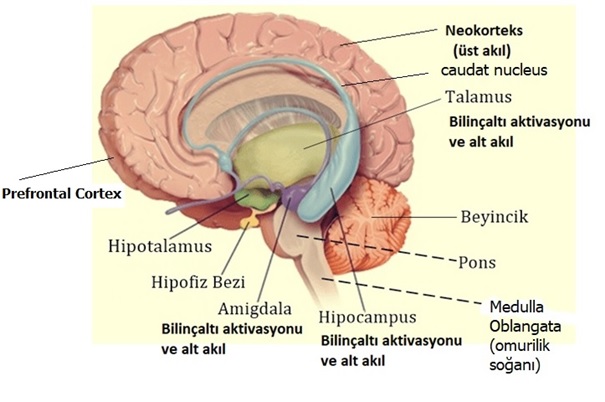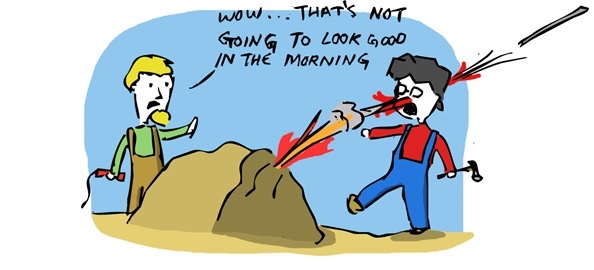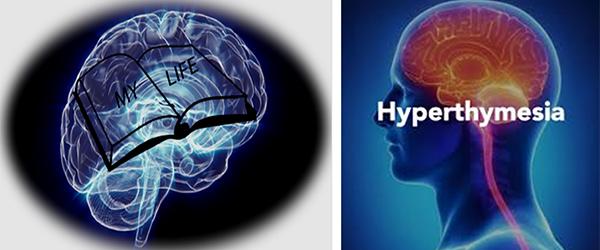IS THE 'LOWER MIND' OR THE 'UPPER MIND' SMARTER?
"If there is something called a 'superior mind' or 'mastermind', as conspiracy theorists say, then it must be located in the neocortex, which is the actual place where the mind is produced, also known as the cerebral cortex. When people talk about a 'superior mind', they are actually referring to a thought process that originates in the physical neocortex or cerebral cortex.
Hyperthymesia, a condition that until 2015 had been diagnosed in only 61 people, all of whom were left-handed, and which involves an exceptional memory for past events going back to ancient times due to the enlargement of both the temporal lobes just above the brainstem and cerebellum, is a behavior that relies on the brain's biology. On the other hand, the 'superior mind' that conspiracy theories draw inspiration from is known as the source of negativity and dark forces in media behavior."
.jpg)
Hyperthymesia, also known as Highly Superior Autobiographical Memory (HSAM), is a condition that results from the functional growth of the temporal lobe and caudate nucleus regions in the brain. The front part of the caudate nucleus, which is known as the head, is associated with working memory and executive functions, and is connected to the lateral and prefrontal cortices. The head of the caudate nucleus controls cognitive and emotional behavior. The middle part of the nucleus receives data from the prefrontal region, which is the area where the upper mind is located. The tail of the nucleus processes visual data and interacts with the temporal lobe to control movements. At the very end of the caudate nucleus, there is the amygdala, a small almond-shaped structure that is responsible for emotional memories and reactions.
The temporal lobe, which is shown in the image below, is part of the neocortex located on the cerebellum and brainstem. The image shows only half of the brain, and it should be understood that the other half has been removed.
If there is such a thing as an "upper mind," then there must also be a "lower mind," and physically, this lower mind should be located in the "hindbrain" or "lower brain" region known as the brainstem. This area contains the most primitive structures in vertebrates, which are responsible for controlling automatic functions such as breathing, blood pressure, heart rate, and digestion. The brainstem contains the medulla oblongata, which regulates functions such as sneezing, coughing, chewing, blushing, vomiting, and reflexes of the body's limbs, as well as the pons, which is responsible for communication between the two halves of the cerebellum and the regulation of breathing, swallowing, and urination. The cerebellum, which is responsible for balance, walking, and motor coordination, is also located in this area. The midbrain, pons, and medulla oblongata are collectively referred to as the brainstem.

The brain has a middle part called the midbrain that connects the upper and lower (or back) parts of the brain, and a positive conscious experience can only be achieved if this part functions well. The midbrain, also known as the mesencephalon, is responsible for transmitting sensory information towards the spinal cord that controls body and head movements, and coordinates auditory and visual movements. Without the midbrain, humans would not be able to respond to threats. Therefore, if the upper mind, where the brain is more active, were to disappear, it would mean the physical disappearance of the neocortex, which is the part of the brain where conscious thought is produced. An example of an incident that resulted in the disappearance of the neocortex is the case of Phineas Gage, a railway worker who had a metal rod pierce through his left frontal lobe during a rock-blasting accident. The accident destroyed the white matter of his neocortex and damaged the nerves on the right side of his brain, which caused him to have perception and speech problems. Although doctors found no other health problems, Gage's personality drastically changed. He died 12 years after the accident, and after removing several teeth that were knocked out by the metal rod, the damage to the neocortex was evident.

This situation shows us that, as the equivalent of the sociological fantasy of conspiracy theorists who claim the existence of the "higher mind," there may be losses in perception and speech abilities as a result of damage to the neocortex and the disappearance of white matter, but human life can continue. Thus, the disappearance of the cerebral cortex, which is called the "higher mind," also means the disappearance of perception and speech abilities in parallel. From this perspective, it is revealed that the two faculties that constitute the "higher mind" are perception and speech abilities. Therefore, if the neocortex, where the "higher mind" is located, is damaged, life can continue, but there may be partial losses in perception and speech abilities due to the damage to white matter.
Expressing sounds with different meanings and distinct speech disorders are now known as idioglossia disorder.
So what if the neocortex, which houses the "higher mind" that makes humans superior to all other creatures in nature, didn't exist?
Or should the "higher mind" referred to as the "superior intellect" by conspiracy theorists be located on the neocortex, and humans who use only the reptilian part of their brains, according to Lean's naming convention, would exist in a social structure based on fear, and humans who use only the limbic part of their brains would activate the subconscious mind of humans made up of the hippocampus, amygdala, and thalamus that make up the limbic system. It is known as biological evaluations that the control commands in the reptilian and limbic parts of the brain can be balanced with the commands sent from the neocortex, where the mind and logic are located, for humans who only use the neocortex part of the brain.
So it can only be activated through commands sent to the lower mind, where the subconscious mind is located, with the perception and speech abilities of the higher mind. Thus, the higher mind is dependent on the biological structure of the brain and needs the lower mind.

Although it can be shown that human life can continue without the neocortex, which is where the higher mind is located, biologically speaking, according to Lean's definition of consciousness, the cerebral cortex is necessary for controlling the limbic and reptilian brain regions, where the lower mind resides. This demonstrates that the higher mind is useless without the lower mind.
The case of Gage, who lost the left frontal lobe due to an iron rod penetrating his skull in an accident, illustrates the importance of both the higher and lower minds. The disconnection between the middle part of Gage's caudate nucleus and the neocortex, where the higher mind is located, resulted in his perception and speech loss, leading to his transformation into a crude and unfeeling person.
ARKEOTEKNO



Sayfa Yorumları (0)
Yorum Bırakın